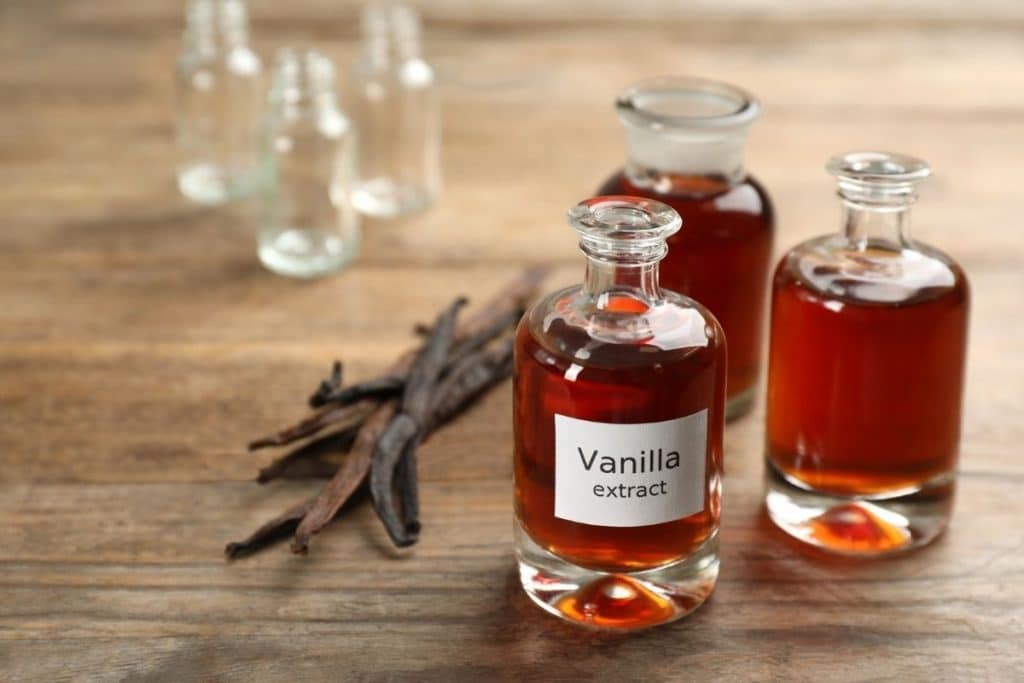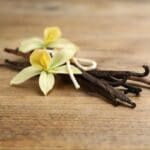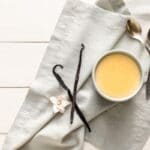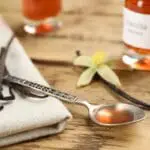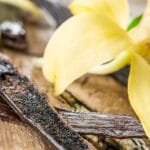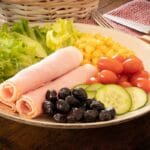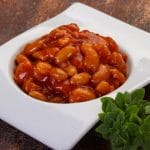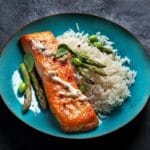Key points:
- Vanilla flavoring primarily comes from vanilla orchid plants. The cultivation of authentic vanilla is complex and time-consuming, taking 3 to 4 years.
- Due to its high cost and labor-intensiveness, synthetic vanilla flavoring is also produced using laboratory methods.
- There are four main types of vanilla beans with distinct flavor profiles: Madagascar, Mexican, Tahitian, and Ugandan.
- To distinguish real vanilla from artificial, look for tiny black specks indicating real vanilla seeds and consider the color of the extract.
Not only is vanilla one of the most expensive spices globally, but it is also one of the most popular, with up to 2300 tons produced annually. Harvested as a seedpod from the intricate vanilla orchid plant, its sweet aroma, and flavor has made it a prevalent ingredient in everything from confectionery, cocktails, and vanilla ice cream to savory dishes, perfumes, and toiletries.
Vanilla spice cultivation is lengthy and complicated. The intricate process takes 3 to 4 years from start to finish. This makes the product pricey and has led to the production of artificial flavorings that are quicker and cheaper to produce.
Although vanilla beans are used to make real vanilla extract, the flavoring or essence bought at general grocery stores may not have any real vanilla in them at all. So where does vanilla flavor come from? Let’s find out.
Where Does Vanilla Extract Come From?
In November 2020, a TikTok video went viral sparking a new rise in interest as to where vanilla flavoring comes from. The video insinuated that the flavoring is a product of beaver secretions, which had many vowing to never sip a vanilla latte again.
Although beavers mark their territory with castoreum, a sweet-smelling vanilla-like substance secreted near their glands, there is no need to put your vanilla milkshake down just yet.
Castoreum is indeed a syrupy, yellow-brown liquid resembling vanilla in both taste and smell. It has been used as a fragrance and as a food additive since the early 1900s. As science and technology developed, new methods of creating synthetic vanilla became more popular.
As a result, castoreum is now rarely used as a food additive, although it is still available for use in fragrances, with a little less than 300 pounds produced annually.
Where Does Artificial Vanilla Come From?
As science has evolved we can now leave the beavers alone. Modern synthetic flavorings are made in laboratories. Chemical components are used to replicate vanillin, the natural substance found in the seed pods that provides its distinctive aroma and flavor.
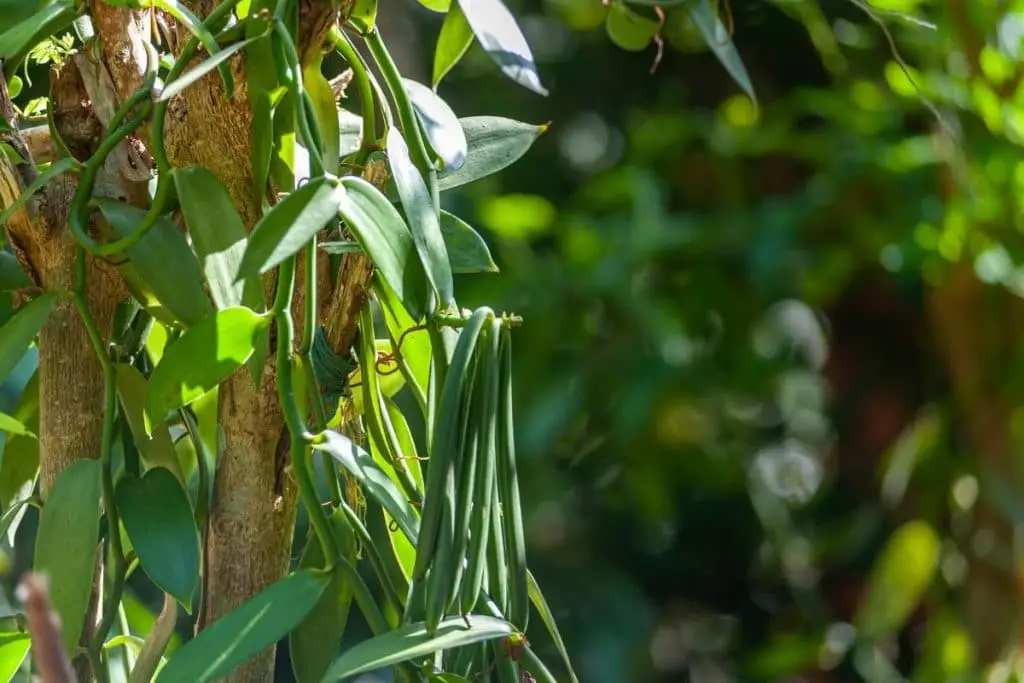
Authentic vanilla production is costly and labor intensive. Imitation vanilla (synthetic flavoring) is used in most vanilla-flavored products as it is much faster, easier, and cheaper to produce than the beans harvested from orchids over a three to four-year period. Around 18,000 metric tons of synthetic flavoring are produced yearly. You can identify the use of artificial flavors in products by looking for the words ‘imitation extract’ or ‘artificial flavoring’ on the label. It may also be referred to as vanilla essence.
Another way synthetic flavouring is produced is by the genetic modification of a fungus that converts sugar into synthetic vanillin, which is then used as a flavoring. Since this method involves creating flavoring from an organism, it is referred to as ‘natural flavoring’, although this can be somewhat misleading as it doesn’t come from the natural plant.
Types of Vanilla
As with most other natural produce, vanilla beans have varying flavor profiles depending on where they are grown. This is due to soil and climate differences as well as the unique methods used in each region for curing and drying the beans. The four main types of vanilla beans are:
1. Madagascar
Also known as Bourbon vanilla, Madagascar vanilla beans are grown on the Indian Ocean islands of Madagascar, Comoros, and Réunion formerly called Île Bourbon (where Bourbon Vanilla gets its name).
Most of the world’s vanilla is Madagascan or Bourbon vanilla. It is thin, with a distinct creamy vanilla flavour. These beans pair well with apples, fish, ice cream, peaches, melon, pears, and strawberries.
2. Mexican Vanilla
Mexican vanilla beans have a high reputation since the spice originated in this area. They are thicker than other varieties with a woody fragrance and a smooth depth of flavor.
Mexican varieties are ideal in recipes where vanilla is the star of the show such as baked goods, cheesecake, custard, crème brulee, and ice cream.
3. Tahitian Vanilla
Tahitian beans are the most expensive type. They are wide, flat, and contain less vanillin than the other varieties. The bean has a floral, fruity aroma with undertones of cherry-chocolate, licorice, and caramel. Tahitian vanilla is often used in commercial perfume products.
4. Ugandan
Ugandan vanilla beans are rarer than other types featuring an earthy aroma with hints of milk chocolate. Similar to Madagascar vanilla, the flavor is bold due to high levels of vanillin. Ugandan vanilla is slightly sweeter with a milk chocolate undertone, perfect to pair with dishes that also contain chocolate.
How To Tell If It Is Real Vanilla?
Besides products indicating on the labeling that they contain real vanilla, vanilla beans, or vanilla extract, you will be able to identify tiny black specs in the ice cream, yogurt, sugar cookies, or other items where real vanilla seeds are used.
The natural vanilla bean extract used for baking should have a brown tinge, while the synthetic flavoring will be labeled as ‘essence’ with a caramel color or clear appearance.
Using the real thing offers a depth of flavor and subtle spice nuances that artificial products just can’t capture, although they may get pretty close. Considering that the price of vanilla pods is so high, you may want to try making your own homemade extract. This way you can get that authentic flavor at a better price, and you know exactly what it is made of.
FAQs
FAQs
Is vanilla vegan?
Yes, vanilla extract and most artificial flavorings are vegan. In the past, flavoring did contain castoreum, but this substance is rarely used today due to the difficulty, and therefore cost, of retrieving it.
Is Mexican vanilla and vanilla extract the same?
No, Mexican vanilla and vanilla extract are not exactly the same. Mexican vanilla is typically made from the vanilla bean species native to Mexico and has a distinct flavor profile. Vanilla extract is made from a variety of vanilla bean species and is commonly used in baking and cooking.
What is the shelf life of vanilla extract?
The shelf life of vanilla extract is generally long, often around 2 to 4 years when stored in a cool, dark place. Proper storage helps maintain its flavor and potency over time.
Conclusion
Castoreum is a sticky brown substance produced by a beaver’s castor sac (between the pelvis and base of the tail) to mark its territory. The substance has a sweet scent which is attributed to the beaver’s diet of leaves and bark.
Although castoreum was more commonly used to make artificial flavoring for human consumption in the past, this practice is very rare today. In fact, the total annual consumption of castoreum in the US is only around 292 pounds which is less than a millionth of a pound per person.
While pure vanilla extract is made from vanilla pods derived through a laborious farming process of vanilla orchids, the flavoring is also made artificially through chemical processes. Either way, you can be at peace that there are no beaver secretions in that vanilla latte you’re about to order.
See more:
*image by DenysR&NewAfrica/depositphotos
